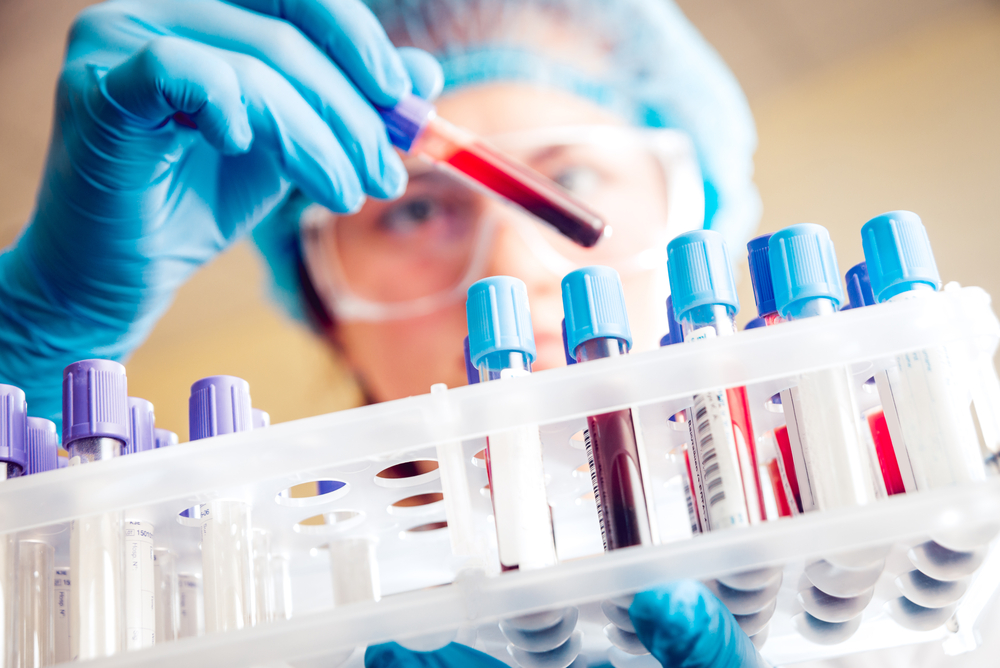Cancer is one of the leading causes of death globally, accounting for approximately 8.8 million (or one in six) deaths in 2015. New cancer cases are expected to increase by approximately 70% over the next two decades.
Cancer also has massive global financial implications. The total impact of premature death and disability due to cancer in 2008 (the latest year for which figures are available) was USD 895 billion, representing 1.5% of the world’s gross domestic product (GDP) that year. Its burden on health and finances can be reduced through early detection and effective management, as there is a higher probability of a cure if the disease is diagnosed at an early stage.
Researchers have long been exploring alternate ways to screen for and diagnose cancer. One option gaining ground in recent years is liquid biopsy; i.e., the testing of blood or other bodily fluids for specific cellular biomarkers.
This is not a new concept. Circulating protein tumor markers such as carcinoembryonic antigen (CEA) or prostate-specific antigen (PSA) have been used for years to screen for cancers. These tests, however, have had limited use, as many cancers do not have a reliable protein biomarker, and even for those that do, the proteins could be elevated due to reasons unrelated to tumor growth.
Also, traditional diagnostic techniques such as tissue biopsy or imaging studies are usually not used for screening purposes; rather, they are recommended only if the patient shows symptoms or a suspicious lump, at which point the disease might already be well-established.
Recent advances are making it possible to test blood or other bodily fluids for biomarkers that identify cancer in patients, such as circulating tumor cells (CTCs) and circulating tumor DNA (ctDNA). As liquid biopsies are gaining a foothold in clinical practice, insurance professionals must understand them and their uses.
About liquid biopsies
A liquid biopsy is a test that detects the presence of tumor products circulating in bodily fluids (e.g., blood, urine, saliva, cerebrospinal fluid, etc.). These tumor products can include:
- Circulating tumor cells (CTCs): Cancer cells which have been shed from a tumor and are present in bodily fluids.
- Circulating tumor DNA (ctDNA): Strands of single- or double-stranded DNA released by cancer tumor cells into the blood.
- Circulating transcriptome: Coding and non-coding RNA molecules in bodily fluids.
- Exosomes: extracellular membrane vesicles.
Early detection of cancer is one of liquid biopsy’s most important potential applications. Since the tests are minimally invasive, they could become routine screening tests, enabling cancer diagnoses at far earlier stages. They could also be useful in assessing and monitoring early-stage cancers where a tissue biopsy might not be possible due to small lesion size or technical difficulty.
Liquid biopsy can also identify tumor-associated mutations from ctDNA, which can help stratify a tumor’s molecular profile and so enable clinicians to optimize patient therapy. The frequency and dynamic alteration of gene mutation in ctDNA correlate with a tumor’s grade and stage, which supports estimates of tumor progression and evolution.
Additionally, liquid biopsy can monitor and predict the effectiveness of treatments and cures as well as the risk of recurrence. Researchers have found, for example, that lung cancer patients with epidermal growth factor receptor (EGFR) C797S mutation in their ctDNA develop resistance to the drug AZD9291, which suggests the diminishing curative effect of this drug and the need to modify the treatment modality. In addition, PIK3CA mutations in ctDNA can detect minimal residual disease (cancer cells from the bone marrow) after chemotherapy or surgery for breast cancer.
As the technology of liquid biopsy develops, testing for ctDNA in particular is likely to find more applicability.
Limitations
Liquid biopsy also has limitations which have restricted its clinical use. There are several reasons: one is that the correlation between CTC and ctDNA is still not clearly established. While in most cases CTC and ctDNA mutually correlate, cases exist where ctDNA levels are detectable but CTC levels are not (and vice versa). Thus, the relative relationship between CTC and ctDNA still needs to be fully understood in order to interpret risk.
In addition, it is still unproven whether the presence of ctDNA in bodily fluids can provide a full picture of a patient’s cancer; i.e., whether all metastases contribute to ctDNA, CTCs, transcriptome and exosomes, or if all tumor cells release ctDNA into the circulation.
Liquid biopsy is more effective at detecting certain cancers than others. It is, for instance, less effective in detecting brain cancer.
Additionally, the cohort size used in most current liquid biopsy research has been small (range 3-1,000). Findings should be tested in much larger cohorts and over longer time spans to establish liquid biopsy as a reliable means for cancer screening.
In the U.S., only one liquid biopsy is currently approved by the Food and Drug Administration (FDA): the cobas® EGFR Mutation Test v2. This test identifies 42 mutations in exons 18, 19, 20, 21 of the epidermal growth factor receptor (EGFR) gene in individuals with non-small cell lung cancer (NSCLC).
At this stage, a more detailed understanding of the origin and dynamics of ctDNA, CTCs, RNA and exosomes is needed to fully establish their clinical relevance.
Despite these caveats, liquid biopsy’s huge potential has already made it a reality in clinical practice. With more extensive research and validation of its use and with improvement in detection technology, it might soon emerge as a reliable alternative and/or supplement to traditional diagnostic methods. It might also play a significant role not just in tumor prevention and early diagnosis, but also in identifying the best treatment modality.
Implications for insurers
The potential for liquid biopsies to lead to early detection of cancer may impact several product lines, mainly critical illness (CI) and medical insurance. Over the past few years, CI has undergone several innovations. Companies now offer staged, multi-pay, and cancer-only plans. A unique selling point of cancer-only and staged CI plans is they cover early-stage cancers as well. Increased near-term utilization of liquid biopsy as part of routine screening tests or diagnostic protocols could lead to higher cancer incidence rates than anticipated. This could impact the pricing assumptions of certain products, especially those offering early-stage cancer benefits. Bear in mind, most definitions require pathologic or histopathologic confirmation of cancer and it is yet to be determined if liquid biopsies would meet those requirements. Insurers, however, do need to consider if additional actions are required in terms of cancer definition modifications.
Furthermore, as technology advances, a liquid biopsy may be able to detect cancer at such an early stage that the disease does not impair the insured in any way. This could lead to payouts for a cancer stage requiring minimal medical management, deviating from the intent of the product to pay for critical conditions alone. This would require a review of the product features so that payout is aligned to the criticality of the disease condition, providing benefits that are sufficient to cover actual expected costs/losses.
Another impact might be on cost. Increased incidence rates could imply higher utilization rates along with increased medical expenses, which might impact the cost of medical insurance. On the other hand, early diagnosis could help slow or even prevent the progression of cancer to late-stage in many cases, thereby possibly leading to some reduction in treatment costs and overall benefit to the insured. Medical expense insurers will need to ensure that policies make it clear to both insureds and their physicians that they will only reimburse treatment costs that are in accordance with best medical practice and will not cover unnecessary treatment or excessive monitoring. Claims teams will need access to appropriate clinical guidelines and support from their chief medical officers in challenging overtreatment and abuse.
Cancer-only CI plans rely substantially on simplified underwriting due to the limited risk of anti-selection. This could change, however, if liquid biopsy use becomes more frequent. Insurance companies might need to modify their underwriting practices to keep pace with the changes in consumer behavior.
Summary and Conclusion
Liquid biopsy may have the potential to revolutionize cancer screening, diagnostics, and treatment. In the coming five to ten years, it could become part of routine annual blood test examinations. This would support early detection, leading to improvements in cancer mortality and morbidity and possibly overall reduction in cost.
There are still many unanswered questions about liquid biopsy’s worth. More studies will be needed to determine the accuracy of the test; specifically, which cancers it can detect and at what stages, and whether it can improve care or survival rates, and to estimate its true impact. In the meantime, insurance professionals will need to watch advancements closely and respond quickly to modify either product frameworks and/or pricing assumptions. Also, the policy wordings – mainly the disease definitions – will need to be reviewed periodically, to ensure they are aligned with the latest clinical advancements.



